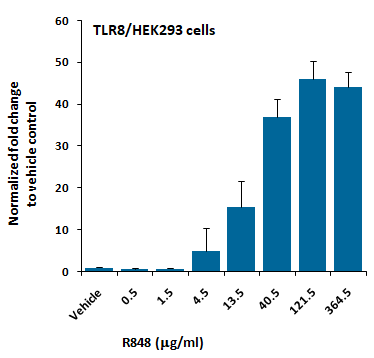Polyclonal Antibody to EPHB2

Figure 1: Western blot analysis of extracts from JK and A549 cells using EPHB2 Antibody 35-1864 .
Roll over image to zoom in
Shipping Info:
For estimated delivery dates, please contact us at [email protected]
| Format : | Purified |
| Amount : | 100 µl |
| Isotype : | Rabbit IgG |
| Content : | Supplied at 1.0mg/mL in phosphate buffered saline (without Mg2+ and Ca2+), pH 7.4, 150mM NaCl, 0.02% sodium azide and 50% glycerol. |
| Storage condition : | Store the antibody at 4°C, stable for 6 months. For long-term storage, store at -20°C. Avoid repeated freeze and thaw cycles. |
Receptor tyrosine kinase which binds promiscuously transmembrane ephrin-B family ligands residing on adjacent cells, leading to contact-dependent bidirectional signaling into neighboring cells. The signaling pathway downstream of the receptor is referred to as forward signaling while the signaling pathway downstream of the ephrin ligand is referred to as reverse signaling. Functions in axon guidance during development. Involved in the guidance of commissural axons, that form a major interhemispheric connection between the 2 temporal lobes of the cerebral cortex. Also involved in guidance of contralateral inner ear efferent growth cones at the midline and of retinal ganglion cell axons to the optic disk. Beside axon guidance, also regulates dendritic spines development and maturation and stimulates the formation of excitatory synapses.
Kalo MS, Yu HH, Pasquale EB. J Biol Chem 276, 38940-8 (2001)
Western blotting: 1:500~1:1000
For Research Use Only. Not for use in diagnostic/therapeutics procedures.
| Subcellular location: | Cell membrane, Cell projection, Cell projection |
| Post transnational modification: | Ligand binding induces cleavage by matrix metalloproteinases (MMPs) such as MMP7/MMP9, producing an EphB2/N-terminal fragment (NTF) and a C-terminal long fragment (EphB2-LF). EphB2-LF is further cleaved by MMPs, producing EphB2/CTF1 which is further cleaved by the PS1/gamma-secretase producing EphB2/CTF2. |
| Tissue Specificity: | Brain, heart, lung, kidney, placenta, pancreas, liver and skeletal muscle. Preferentially expressed in fetal brain. |
| BioGrid: | 108362. 27 interactions. |
|
There are currently no product reviews
|














.png)












